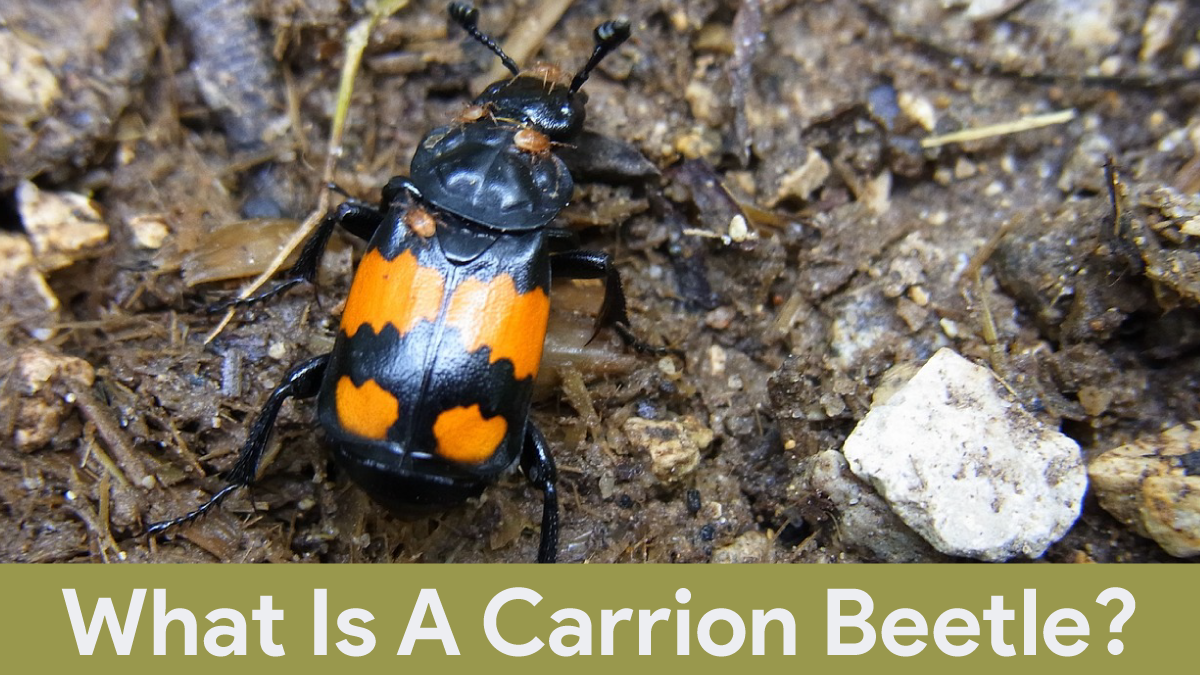Beetles eat decomposing organic matter to maintain balance in the food chain, reducing populations of insects eating the same material, such as flies.
We have used some carrion beetles as indicators of environmental health and as bio-indicators of ecological stress. In this article, we will discuss what is a carrion beetle, Its Types, Characteristics and Habitat.
Table of Contents
What is a carrion beetle?
Carrion beetles are insects that feed on dead and decaying matter, including animal carcasses. They are an essential part of the ecosystem as they help break down dead organisms and recycle nutrients into the soil.
Types of carrion Beetles?
There are many carrion beetles, including:
- Silphidae– this family of beetles includes some of the largest carrion beetles, such as the burying beetles. These nocturnal creatures are infamous for their propensity to consume tiny animal corpses efficiently.
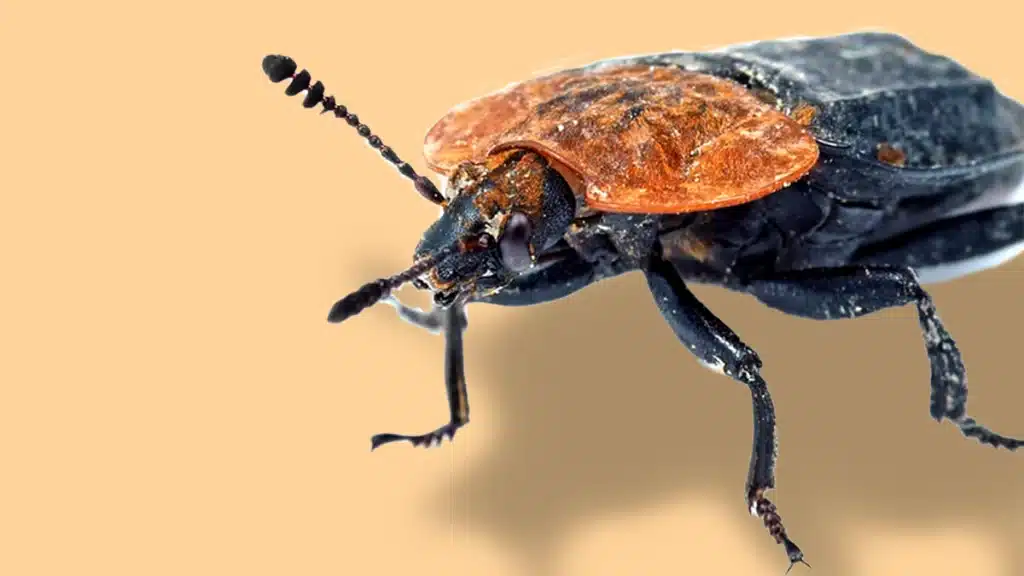
2. Leiodidae – this family includes the smaller species of carrion beetles, such as the round fungus beetles. They feed on the fungi that grow on decaying organic matter and the eggs of other insects.
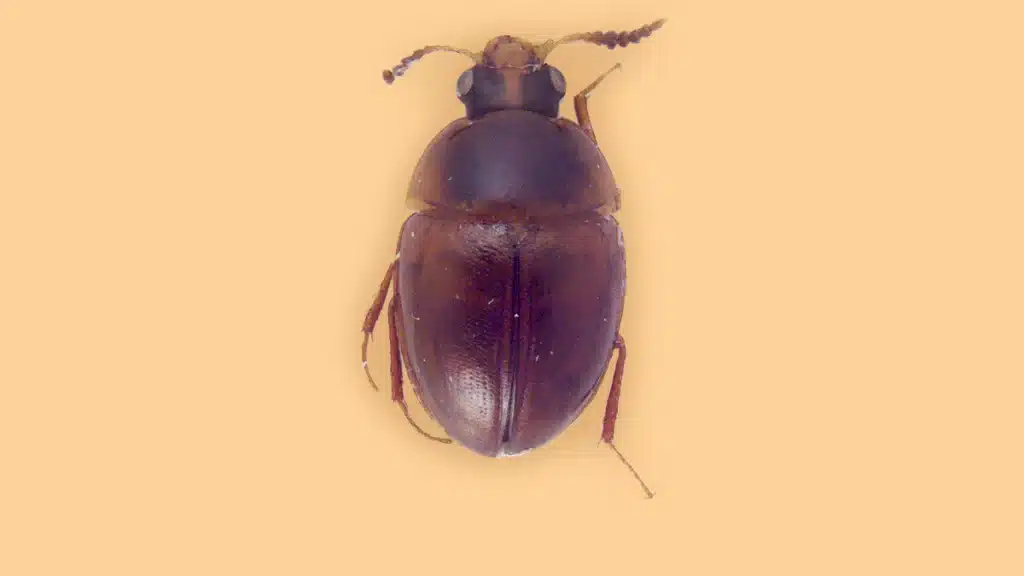
3. Dermestidae -This family of beetles is called the skin bees; they feed on dead animals’ hair, feathers, or dried skin.
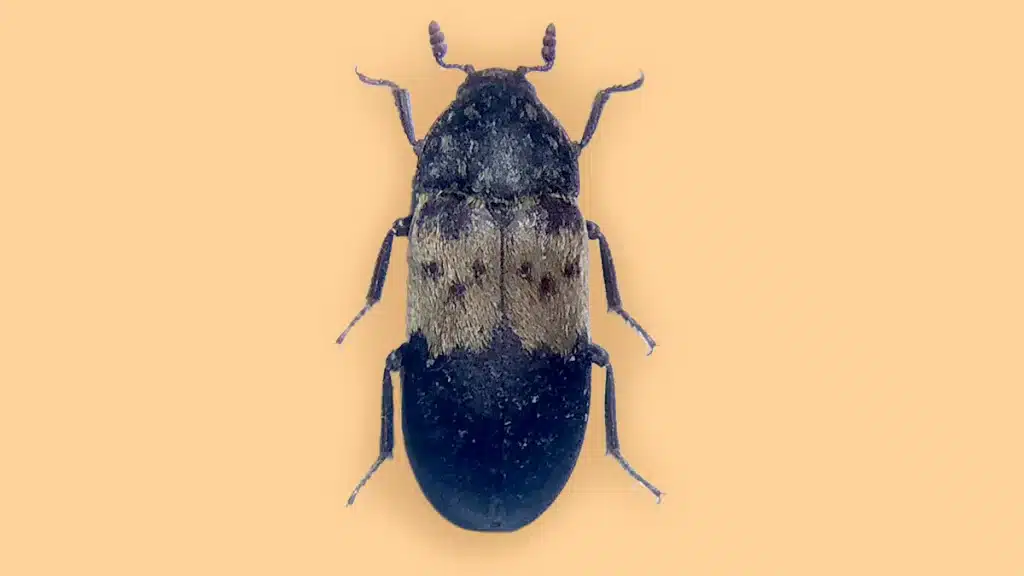
4. Histeridae – These peculiar insects, known as clown beetles, feed on the soft tissues of dead animals and the eggs and larvae of other insects.
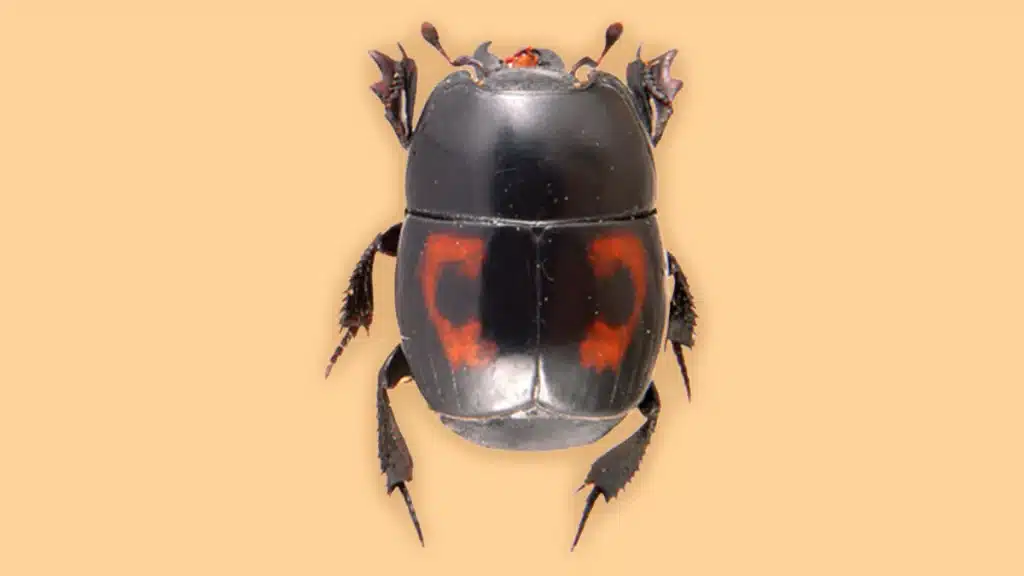
5. Nitidulidae – this family of beetles includes the sap beetles, which feed on sap and fruit juices and decaying organic matter. We often observed these colourful creatures at night, flocking to light sources. They appear particularly captivating as they radiate vibrancy.

Each species has unique adaptations that help it survive and thrive in its specific environment.
How to identify carrion beetle?
Carrion beetles have several distinct characteristics that set them apart from other insects:
- Size of carrion beetle: Carrion beetles can vary significantly from tiny species less than a millimetre too large species that are several centimetres long. They are oval or elongated in shape and have rounded or flattened bodies.
- Colour: Carrion beetles can be black, brown, red, or a combination of colours. Some species have brightly coloured markings or patterns, which can help to deter predators.
- Antennae: Carrion beetles have distinctive antennae, which are often long and feathery. In some species, the antennae detect the odour of decaying organic matter.
- Legs: Carrion beetles have sturdy legs adapted for digging and burying. In some species, the front legs are enlarged and used for digging, while they use the hind legs for pushing the soil.
- Wings: Most carrion beetles have wings, which they use for flight. In some species, the wings are soft, while in others, they are stiff and used for protection.
- Feeding habits: Carrion beetles feed on decaying organic matter, including dead animals and plant material. Some species feed on the soft tissues of the dead animal, while others feed on the eggs of other insects laid on the carcass.
Where do carrion beetles live
From the Arctic tundra to the amazon, we can find carrion beetles worldwide. They can survive in various habitats, including forests, deserts, grasslands, and wetlands.
We typically find carrion beetles in areas with an excellent food source, such as dead and decaying animals or plants.
We can also find them where other insects, such as flies, congregate around decomposing organic matter.
Carrion beetles also live in urban areas, eating dead animals and plants in parks, gardens, and cemeteries.
It also attracted some carrion beetles. We can find two lights at night and near streetlights or porch lights.
These tiny creatures are very environment-friendly. Knowing what is a carrion beetle is a minor deal.
What is the life cycle of the carrion beetle?
The lifecycle of carrion beetles typically includes four stages: egg, larva, pupa, and adult.
- Egg: Female carrion beetles lay their eggs near a food source, such as a dead animal or plant. The eggs are small and usually oval.
- Larva: After hatching, the larvae feed on the surrounding dead organic matter. They are typically grub-like in appearance, with a plump, worm-like body and a small head. The larvae of some species have well-developed legs, while others are legless.
- Pupa: When the larvae have reached a specific size, they pupate, transforming into the pupal stage. Usually, pupae are found in a cocoon or pupal cell and undergo a complete metamorphosis, changing from larval to adult.
- Adult: The final stage of the carrion beetle lifecycle is the adult stage. Adult beetles emerge from the pupal stage and mate. They feed on dead organic matter; in some species, the adults also provide on the eggs of other insects laid on the carcass. The length of the adult stage varies between species, but it typically lasts several weeks to several months.
The entire lifecycle of a carrion beetle can take several months to a year or more, depending on the species and the environmental conditions. After the adult stage, the cycle begins again with the laying of eggs.
Do carrion beetles fly?
Yes, many species of carrion beetles have wings and can fly. The ability to fly is essential for carrion beetles, enabling them to locate food sources such as carcasses or vegetation quickly and efficiently.
In addition, this mode of locomotion affords opportunities for mating with fellow insects.
However, not all carrion beetles can fly. Some species have reduced or non-functioning wings and cannot fly. These species may still be capable of crawling or burrowing to find food.
Are carrion beetles harmful?
No, carrion beetles are not harmful to humans. The decomposition of organic matter, namely carcasses or vegetation, reconditions valuable nutrients into the soil.
Carrion beetles do not bite or sting, or carry diseases that harm humans. We do not consider them pests and do not cause damage to crops or other plants.
Final Words:
While carrion beetles may not harm humans, they can be beneficial. In addition, they can also help reduce the number of insects attracted to dead organic matter, which can reduce disease spread.
They can also help clean up dead animals and other debris, reducing the amount of waste in an ecosystem.
Overall, carrion beetles are essential members of the ecosystem and play a valuable role in maintaining a healthy and balanced environment. If you spot them, do not panic because now you know what is a carrion beetle and how to handle it.
Related Articles
What Is A Titan Beetle?: What Makes Them Unique
What are blister beetles and what kills blister bugs?
